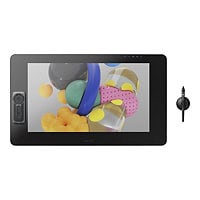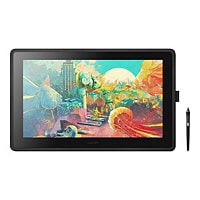Tech specs
Brand
Canon
Product Line
Canon EOS
Model
R10
Manufacturer
Canon
Connector Type
HDMI output (19 pin micro HDMI Type D), Microphone (mini-phone stereo 3.5 mm), Remote control, USB 2.0 (USB Type-C)
Display Format
1,040,000 pixels
Image Sensor Size
APS-C (22.3 x 14.9 mm)
Image Sensor Type
CMOS
Touchscreen
No
White Balance
Automatic, Custom, Presets
White Balance Presets
Cloudy, Daylight, Flash, Fluorescent light (white), Shade, Tungsten light
Audio Signal Format
AAC
Microphone Operation Mode
Stereo
Composite Video Out
HDMI, USB 2.0
Continuous Shooting Speed
15 frames per second, 23 frames per second, 3 frames per second, 6.3 frames per second, 7.7 frames per second
Digital Camera Type
Mirrorless system
Extended ISO (Max)
51200
Face Detection
Yes
Face Detection Details
Eye Detect AF, Face Detection AF/AE
Flash Terminal
Hot shoe
High-Definition Video Support
4K
Image Processor
DIGIC X
ISO (Max)
51200
Max Frame Rate
60 fps
Max Video Resolution
3840 x 2160
Native ISO
100-32000
Recording Formats
C-RAW, HEIF, JPEG, RAW, RAW + HEIF, RAW + JPEG
Special Effects
Faithful, Fine Detail, Fisheye, Grainy B&W, HDR Art, Landscape, Miniature, Monochrome, Neutral, Portrait, Soft Focus, Standard, Toy camera, Water painting
Video Capture
1920 x 1080 p - 119.88 fps, 1920 x 1080 p - 23.98 fps, 1920 x 1080 p - 25 fps, 1920 x 1080 p - 29.97 fps, 1920 x 1080 p - 50 fps, 1920 x 1080 p - 59.94 fps, 3840 x 2160 p - 23.98 fps, 3840 x 2160 p - 25 fps, 3840 x 2160 p - 29.97 fps, 3840 x 2160 p - 50 fps, 3840 x 2160 p - 59.94 fps
Connectivity Features
Live streaming, Remote control via mobile devices, Remote live view, Wireless image printing, Wireless image upload to cloud server, Wireless video upload to cloud server
Display Form Factor
Rotating
Exposure Modes
Aperture-priority, Automatic, Bulb, E-TTL II program flash, Flexible-priority AE, Manual, Program, Shutter-priority
Features
Display brightness control
Flash
Pop-up flash
Guide Number (m/ISO 100)
6
ISO Sensitivity
ISO 100-32000, ISO auto (100-25600), ISO auto (200-32000)
Max Shutter Speed
1/4000 second (time unit)
Memory Card Slot
SD card
Memory Cards Supported
SD Memory Card, SDHC Memory Card, SDHC UHS-II Memory Card, SDXC Memory Card, SDXC UHS-II Memory Card
Min Shutter Speed
30 second (time unit)
Print Standard
DPOF support, Exif Print support, PictBridge support
Red-Eye Reduction
Yes
Screen Size
3 inch
Screen Size (metric)
7.5 centimetre
Shooting Modes
Backlight, Close-up, Dynamic Range (HDR), Food, Group photo, Handheld night scene, Kids, Landscape, Night portrait, Panning, Panorama assist, Portrait mode, Self-portrait, Smooth skin, Sports mode
Type
LCD display
Wireless Interface
Bluetooth 4.2, IEEE 802.11b/g/n
Battery Chemistry
Lithium ion
Battery Form Factor
Manufacturer-specific
Battery Life Details
Photo shooting - 260 shots (EVF on), Photo shooting - 430 shots (LCD Monitor on)
Battery Model Supported
Canon LP-E17
Details
Canon LP-E17 Li-ion rechargeable battery (included)
AE/AF Control
Animal detection AF, Body detection AF, Eye detection AF, Face-priority AF, Head Detection AF, Subject-tracking AF, Vehicle-tracking AF
Auto Exposure Bracketing
3 steps in 1/2 or 1/3 EV steps
Autofocus
Automatic, Manual
Autofocus Points
651
Autofocus Type
Dual Pixel CMOS AF
Bracketing Modes
Focus bracketing, White balance bracketing
Effective Sensor Resolution
24,200,000 pixels
Element Quantity
17
Exposure Compensation
±3 EV range, in 1/2 or 1/3 EV steps
Exposure Metering
Center-weighted, Evaluative, Partial (5.8%), Spot (2.9%)
Exposure Metering Zones
384
Exposure Range
EV 0-20 (ISO 100), EV -2-20 (ISO 100)
Focal Length (35mm)
29 - 240mm
Lens Aperture
F/3.5-6.3
Lens Features
Aspherical lens, Built-in control/focusing ring, Stepping Motor (STM) technology, UD glass
Lens Group Quantity
13
Lens Mount Type
Canon RF
Lens Series
IS STM Canon RF-S
Lens Type
Zoom lens
Max Focal Length
150 millimetre
Max Operating Temperature
104 degree Fahrenheit
Max View Angle
74.3 degrees
Min Focal Length
18 millimetre
Min Focus Distance
6.7 inch
Min Operating Temperature
32 degree Fahrenheit
Operating Humidity
0 - 85%
Optical Sensor Size (metric)
14.9 x 22.3 mm
Optical Zoom
8.3
Self-Timer
10 sec, 2 sec
Sensor Dust Reduction
Yes
Sensor Features
Dust Reduction (image sensor vibration), Self Cleaning Sensor Unit
Sensor Resolution
24.2 megapixel
Special Lens Functions
Zoom
Total Pixels
25,500,000 pixels
Video Formats
H.264, H.265, HEVC, MP4, MPEG-4
Viewfinder Type
OLED
Zoom Adjustment
Manual
Features
Anti-flicker, Camera orientation detection, Chromatic Aberration Compensation (CAC), Cropping an image, Depth-of-field preview button, Diffraction correction, Digital Lens Optimizer, Distortion correction function, Dust Delete Data system, Firmware upgradable, HDR image enhancement technology, Highlight point display, Histogram display, In-camera RAW processing, Optical Low Pass Filter (OLFP), Peripheral illumination correction, Resizing an image, RGB primary color filter, Scene Intelligent Auto technology, Silent shooting, Timelapse Recording
Image Storage
1600 x 1600, 1984 x 1984, 2112 x 1600, 2400 x 1344, 2400 x 1600, 2656 x 1992, 2656 x 2656, 2976 x 1680, 2976 x 1984, 3552 x 2664, 3984 x 2240, 3984 x 2656, 4000 x 4000, 5328 x 4000, 6000 x 3368, 6000 x 4000
Optical Viewfinder Dioptric Correction Range
-3 to +1
Optical Viewfinder Field Coverage
100%
Optical Viewfinder Magnification
0.95x
Packaged Quantity
1
Product Type
Digital camera
Shutter Type
Electronic, Mechanical electronically-controlled
Viewfinder Color Support
Color
Viewfinder Diagonal Size
0.39 inch
Viewfinder Diagonal Size (metric)
1 centimetre
Viewfinder Resolution
2,360,000 pixels
White Balance Bracketing
Yes
X-Sync Speed
1/200 sec, 1/250 sec
Accessories Included
Battery Charger, Battery Cover, Dust Cap, Lens Cap, neck strap, Shoe Cap
Lens Included
RF-S 18-150mm F3.5-6.3 IS STM lens
Memory Card Included
No
Height
3.5 inch
Weight
13.44 ounce
Weight Details
Camera body only: 13.4 oz, Camera with battery and memory card: 15 oz
Width
4.8 inch
Depth
3.3 inch
Body Material
High-strength engineering plastic, Magnesium alloy
Filter Size
55 millimetre
Color Category
Black
1-8 of 8 reviews
Couldn't Be Happier Six Months In
The camera buying process is not an easy one. I was a bit of a newbie when I began my research, but I'd call myself an intermediate. I had done some photography using my school's cameras before, but this blew me away. I was worried this was too inexpensive compared to other higher-end alternatives, but I made t
Read more
Small complex highly capable camera with some drawbacks
I previously reviewed this camera and only gave it 3 stars. One of my reasons for that rating was a problem I had with the R10 introducing chromatic aberration in JPEGs using my Tokina 10-17mm F3.5-4.5 Fisheye lens. Today I spoke with a Canon tech, and he instructed me how to correct the problem. Canon has no w
Read more
A small mirrorless camera capable of good work, with some problems
I have had this camera about 5 months now. I have discovered most of its strengths & weaknesses. It is capable of excellent work under good lighting conditions; however, it struggles in contrasty light. Highlights get washed out & shadows are very dark. Detail can't be recovered Photoshop. Lightened shadows bec
Read more
The good, the bad and the ugly
I bought the R10 with 18-150mm lens kit a month ago. The camera has a lot of nice features and in some circumstances takes amazing pictures. It does not do well in contrasty light, however. Highlights get washed out and shadows are really dark. Lightened the shadows in Photoshop just turns them gray. very grain
Read more
A small camera with good & bad points
I bought this camera kit a little over a month ago. I ordered it from my local camera shop based on pictures I saw of the camera & reviews. When I received it I was disappointed by how small it is. I had planned to use it primarily with a Canon control ring adapter with my DSL lenses. The sensor is the same siz
Read more
Good camera for beginner and Intermediate photographers.
I bought the R10 to get back into photography. I grew up with film and now jumping into the mirrorless world. I've had this camera for a year now. with an adapter I can use my old canon lenses which was a huge plus for me. The camera itself it a good camera and fun to use. I have been lucky to get some good sho
Read more
Great for a beginner, with room to grow
I love this camera and lens kit. After a bit of research, this was my entry into the world of photography. And I am having the best time learning with it. The biggest selling point for me was that it can grow along with me as my skills improve.
Nice little camera
I’ve only used a little bit so far, but at this point I really like it. Wide range lens and small lightweight body are easier and more convenient to carry around traveling than a larger DSLR. Picture quality is great. Just need to get the hang of the Canon layout since my DSLRs are Nikon.
Read more







